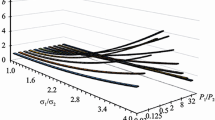Abstract
A 10 cm (*) radar has been used on the steerable 25 m diameter aerial at Chilbolton, U.K., to produce detailed threedimensional maps of raincell distribution and intensity. The present paper examines differences in variation of radar reflectivity with height from the model at present recommended by theCcir.Wind shear can have a considerable influence on the distribution of rain as it falls, and may cause a 45° angle of inclination of a cell. This remains constant as the rain cell travels and is usually offset from the direction of travel of the cell. The information on the variation of radar reflectivity with height and the inclination of the rain cells are each important in the field of radio communications.
Analyse
Un radar fonctionnant à 10,9 cm de longueur d’onde a été utilisé sur l’antenne orientable de 25 m de diamètre à Chilbolton, afin d’obtenir des cartes en trois dimensions de la répartition des cellules de pluie et de leurs intensités. Cet article examine la différence entre les variations des réflectivités radar avec l’altitude et celles du modèle actuellement indiquées par leCcir.Les cisaillements de vents, peuvent avoir une influence considérable sur la distribution des chutes de pluie et peuvent causer une inclinaison des cellules jusqu’ à 45°. Les cisaillements restent constants au cours des déplacements de la cellule, mais se trouvent en général à l’extérieur de ces derniers. Les variations de la réflectivité radar avec l’attitude et l’inclinaison des cellules de pluie sont importantes dans le domaine des communications radioélectriques.
Similar content being viewed by others
References
Norbury (J. R.),White (W. J. K.). Intensity-time profiles of high intensity rainfall’,Meteorolog. Mag., U.K. (1975),104, pp. 221–277.
Freeny (A. E.),Gabbe (J. D.). A statistical description of intense rainfall’,Bell Syst. tech. J. U.S.A. (1969),48, n∘ 6, pp. 1 789–1 851.
Crane (R. K.). Propagation phenomena affecting satellite communication systems operating in the centimeter and millimeter wavelength bands,Proc. I.E.E.E., U.S.A. (1971),59, n∘ 2, pp. 173–188.
Lin (S. H.). Statistical behaviour of rain attenuation.Bell Syst. tech. J. U.S.A. (1973),52, n∘ 4, pp. 557–581.
Crane (R. K.). Virginia precipitation scatter experiment — data analysis, NASA/GSFC X-750-73-55,NASA Goddard Space Flight Center, Greenbelt, Maryland, U.S.A. (nov. 1972).
***. Report 563: Radiometeorological dataC.C.I.R. Assemblée plénière Genève 1974, vol. V (1975) pp. 96–112.
Gunn (K. L. S.),Marshall (J. S.). The effect of wind shear on falling precipitation.J. of Meteorolog., U. S. A. (1975),12, pp. 339–349.
Author information
Authors and Affiliations
Additional information
Actual wavelength 10.9 cm, see table I.
Rights and permissions
About this article
Cite this article
Hall, M.P.M., Goddard, J.W.F. Variation with height of radar reflectivity factors due to rain and the influence of wind shear on rain cells. Ann. Télécommunic. 32, 444–448 (1977). https://doi.org/10.1007/BF03003492
Received:
Issue Date:
DOI: https://doi.org/10.1007/BF03003492




